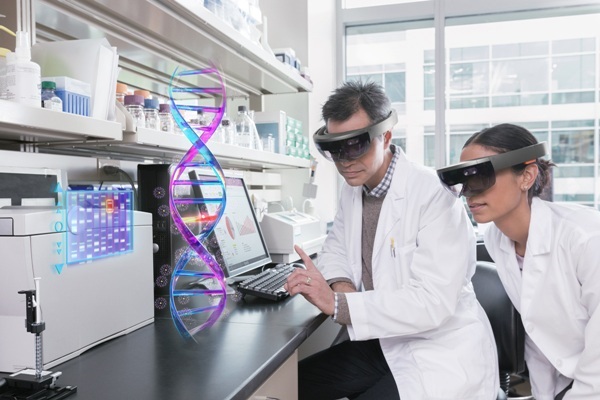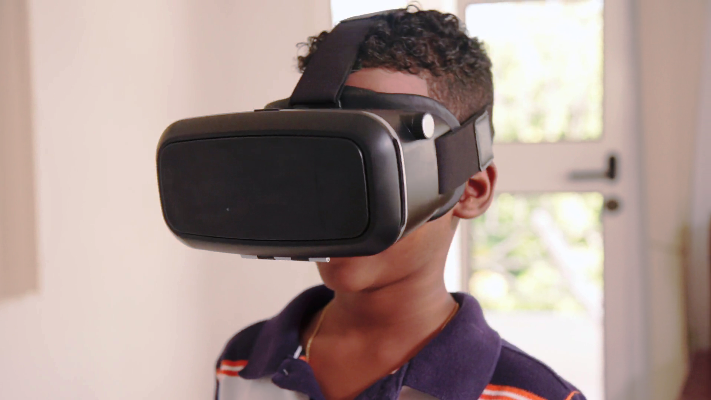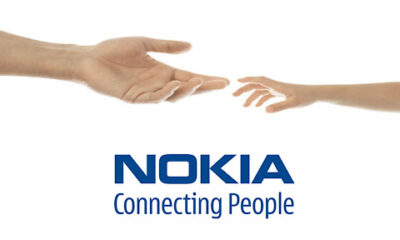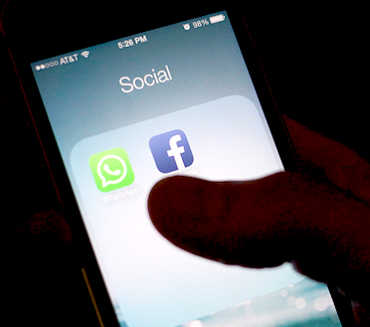human traffickingFeatures
Artificial Intelligence breaks boundaries of human possibilities

Avideo that has been doing rounds on social media platforms about the apparently boundless possibilities of man to use machines to do tasks, well beyond many people’s imaginations, has humbled many of us.
In that video, Julia White, the Vice President of Azure Marketing, demonstrated during the Microsoft Aspire 2019 conference that was held on July 15, 2019 in Las Vegas, how with Microsoft’s new Hololens 2 Headset, she was able to generate a complete hologram/objectified replica of herself speaking in a foreign language.
For a moment, visualising White’s hologram seemed like a scene removed from a science fiction movie. And yet, this was a real life event that happened only a few weeks ago in the US city of Las Vegas.
According to White, achieving that mind-blowing near-reality holograms was a monumental success in the realisation of several AI technologies that are all based on the advanced power of computing. It is a great leap forward from virtual reality through augmented reality to to mixed reality.
According to the website, analyticsindiamag.com, researchers at Microsoft have been working on a technology concept dubbed Holoportation and mixed realities for a while now.
The site describes Holoportation as a type of 3D capture technology that allows high-quality 3D models of persons to be reconstructed, compressed and transmitted anywhere, real-time.
There were primarily four key types of technologies assembled for the event.
Microsoft’s Hololens 2 Headset, the Azure Speech-To-Text Capability, the Azure Translate, and microsoft’s Neural Text-To-Speech Technology.
Behind White’s Demo
White’s demo was a jaw-dropping highlight of the event. The main idea behind the innovation was to show that conversations between people can happen in real time regardless of space and language differences.
“It is basically a method of virtual teleportation from one space to another regardless of language and distance,” wrote Ambika Choudhury, the author of the science piece.
Azure Corporate VP, White said that the “game-changing” experience used mixed reality and Azure AI services to create the hologram of the speaker. The life-size hologram of White was created at Microsoft’s Mixed Reality Capture Studios. At the event, White put on the headset which created a smaller version of herself which she called “mini-me” and with the help of Hololens 2, she shows it off as if she is actually holding the smaller version of herself.
The speaker then commands “render keynote” and with the help of some special effects, the “mini-me” version is transformed into a real and full-sized hologram of the speaker.
The hologram of White is rendered in real-time and spoke in the Japanese language with the speaker’s unique voice signature. The interesting part is that White personally does not know how to speak Japanese.
Explanation of Concepts Virtual Reality (VR)
Users are completely immersed in a computer-generated reality when they experience virtual reality. Virtual reality is the most well-known of immersive technologies. While the world of gaming and entertainment were early adopters of virtual reality, VR applications are now used in many organizations and industries including the military, engineering and construction, healthcare, education, business and more.
When a user puts on a head-mounted display or a VR headset, they sense—and their brains believe—they are moving among virtual objects on a screen. Most commonly, the headset is connected to a PC or console that enables the virtual experience. In the case of Google Cardboard, Samsung Gear VR and Google Daydream, it’s a smartphone that creates the virtual experience, while the Oculus Go can do it all because it’s a standalone VR headset.
Virtual reality tools already help surgeons plan surgery, individuals experience a travel destination even before they take flight, children learn in a simulated (but very real) walk on the moon and soldiers train for combat scenarios, but the future will be full of even more VR applications as businesses of all kinds figure out ways the technology can enhance operations.
Augmented Reality (AR)
Rather than provide a fully immersive virtual experience, augmented reality enhances the real-world with images, text, and other virtual information via devices such as heads-up displays, smartphones, tablets, smart lenses, and AR glasses.
Augmented reality is useful for more than just entertainment. Retailer IKEA created an AR app that helps shoppers visualize what certain products will look like in their home before they purchase them. The app overlays virtual versions of the products onto the real-live image of customers’ living spaces. In addition to IKEA, companies in aviation, automotive, healthcare, travel and tourism, and more are developing augmented reality solutions. Augmented reality technology can enhance travelers’ experiences in many ways. Imagine being on a self-guided walking tour and wanting to know details about the architecture of a building you discover. With an augmented reality technology app, you could just point your phone at the building, and all the details are projected in your line of sight.
Mixed Reality (MR)

kid with vitual reality
Where does mixed reality fit in on the immersive technology spectrum? A mixed-reality environment goes a step beyond augmented reality because users can interact in real-time with virtual objects that are placed within the real world. These virtual items will respond and react to users as if they were actual objects.
In order to experience mixed reality, an MR headset is used. MR headsets offer a holographic experience through translucent glasses or an immersive experience. Some mixed reality products that are currently available include Microsoft’s HoloLens, Acer Windows Mixed Reality, Lenovo Explorer, and Samsung Odyssey. It’s the gesture/gaze/voice recognition technology through a pair of motion controllers or through the MR headset that helps deliver a believable mixed-reality experience. It takes a lot more processing power to enable a mixed-reality experience than it does for a virtual or augmented reality experience.
Comments

























